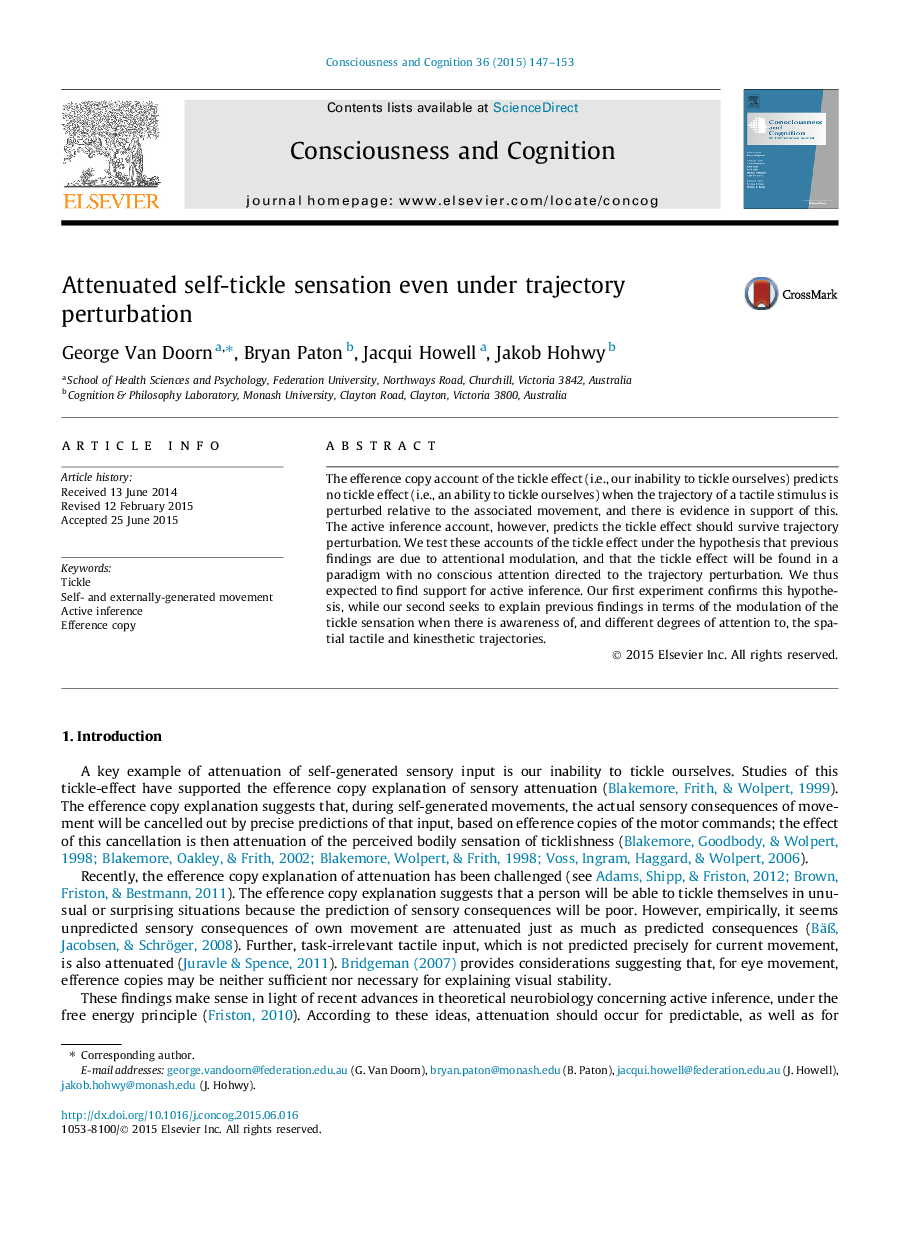| Article ID | Journal | Published Year | Pages | File Type |
|---|---|---|---|---|
| 7289060 | Consciousness and Cognition | 2015 | 7 Pages |
Abstract
The efference copy account of the tickle effect (i.e., our inability to tickle ourselves) predicts no tickle effect (i.e., an ability to tickle ourselves) when the trajectory of a tactile stimulus is perturbed relative to the associated movement, and there is evidence in support of this. The active inference account, however, predicts the tickle effect should survive trajectory perturbation. We test these accounts of the tickle effect under the hypothesis that previous findings are due to attentional modulation, and that the tickle effect will be found in a paradigm with no conscious attention directed to the trajectory perturbation. We thus expected to find support for active inference. Our first experiment confirms this hypothesis, while our second seeks to explain previous findings in terms of the modulation of the tickle sensation when there is awareness of, and different degrees of attention to, the spatial tactile and kinesthetic trajectories.
Keywords
Related Topics
Life Sciences
Neuroscience
Cognitive Neuroscience
Authors
George Van Doorn, Bryan Paton, Jacqui Howell, Jakob Hohwy,
